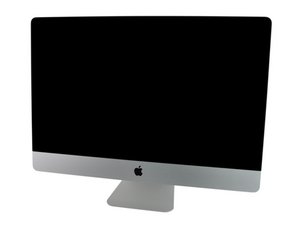The item(s) will be deleted immediately. Are you sure ...
I have two internal SSD disks in my iMac (one -the boot drive- on the original place of the old 1 Tb HD) and one installed additionally inside.
- When I delete something from my boot drive, it is moved to the trash and I need to delete it manually.
- But when I delete something from my -second- internal disk, I get the message 'The item(s) will be deleted immediately. Are you sure you want to continue?'
So it is not moved to trash but deleted immediately.
Is there a way to get it so that with the second disk, deleting items will also move them to the trash first and not deleting them at the same instance?
It has something to do with the fact that it's an extra disk which was built in;
The system recognizes it as an internal disk (you can tell by the default icon the system gave it - so no external or network disk icon, but a 'real' (internal) HD icon),
but when deleting, it treats it like an external or network mounted disk; with those you also cannot keep deleted items in the trash bin and you'll get the same immediate deleting message + immediate deletion of items.
Rebuilding permissions (of trash) etc doesn't work either.
So somehow the system must fully accept the disk being an internal one.
Updaten (22-02-16)
I have Mac OS 10.10.5
In the meanwhile I have also discovered that when I startup with the other (second disk), I have the same thing happening with the first disk, so exactly the way around. Perhaps this is sata bus related or something like that?
Update (02/24/2016)
Thanks for your suggestions, I slowly also get the impression that perhaps the fact that both disks are bootable (so with a system on it) could cause this to happen and one of the disks without an active system on it would fix the issue.
Unfortunately it is my 'backup' system disk -in case of an emergency- so removing the system is not something I prefer.
Strangely enough when you look in: about his mac -> system overview -> SATA/SATA Express, it does recognize the disks as internal and not being removable.
Is dit een goede vraag?


 2
2  2
2 
 971
971
2 opmerkingen
That is correct! System Profile will show the drive as an internal disk. The issue here is not at the hardware level its at the OS level related to the permissions.
In your case you have two permission DB's which are independent of each other (two OS copies). Most people who have two partitions or drives have a single DB as they only have one copy of the OS.
door Dan
Thanks for your help Dan, I figure that is what's causing the 'issue' then.
door PHdJ